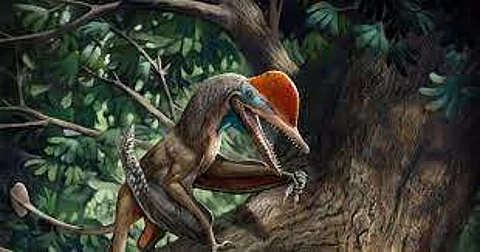

A team of international researchers has discovered the earliest-known example of an opposed thumb on a new tree-dwelling pterosaur species that lived in China 160 million years ago. Dubbed 'Monkeydactyl', the small-bodied Darwinopteran pterosaur with an estimated wingspan of 85 cm was discovered in the Tiaojishan Formation of Liaoning, China.
The researchers from Brazil, China, UK, Denmark and Japan have described the new Jurassic pterosaur Kunpengopterus antipollicatus. The specimen was preserved with an opposed pollex (thumb) on both hands. The species name antipollicatus' means opposite thumbed' in ancient Greek, in light of the opposed thumb of the new species.
This is the first discovery of a pterosaur with an opposed thumb. It also represents the earliest record of a true opposed thumb in Earth's history. The researchers published their discovery on Tuesday in the journal Current Biology.
"The fingers of Monkeydactyl' are tiny and partly embedded in the slab. Thanks to micro-CT scanning, we could see through the rocks, create digital models and tell how the opposed thumb articulates with the other finger bones, said Fion Waisum Ma, co-author of the study. "This is an interesting discovery.
It provides the earliest evidence of a true opposed thumb, and it is from a pterosaur - which wasn't known for having an opposed thumb, said the PhD researcher at the University of Birmingham. A true opposed pollex is mostly present in mammals (eg primates) and some tree frogs, but extremely rare among extant reptiles except for chameleons. This discovery adds to the list that Darwinopteran pterosaurs such as K antipollicatus also evolved an opposed thumb.
The research team scanned the fossil of K antipollicatus using micro-computed tomography (micro-CT), a technique making use of X-ray to image an object. By studying its forelimb morphology and musculature, they suggest that K antipollicatus could have used its hand for grasping, which is likely an adaptation for arboreal life.
